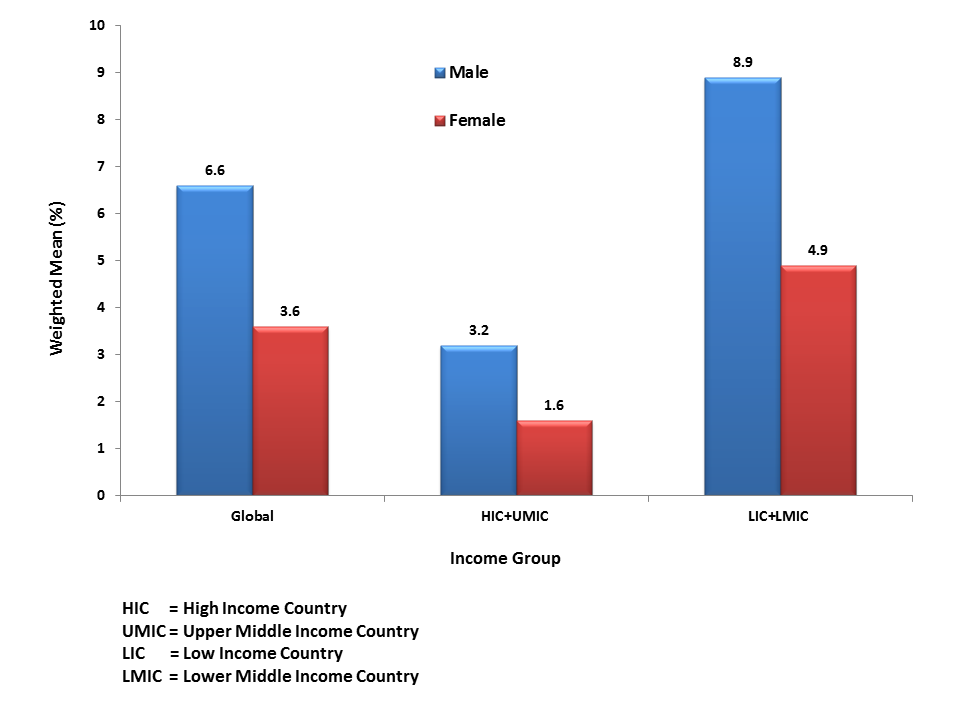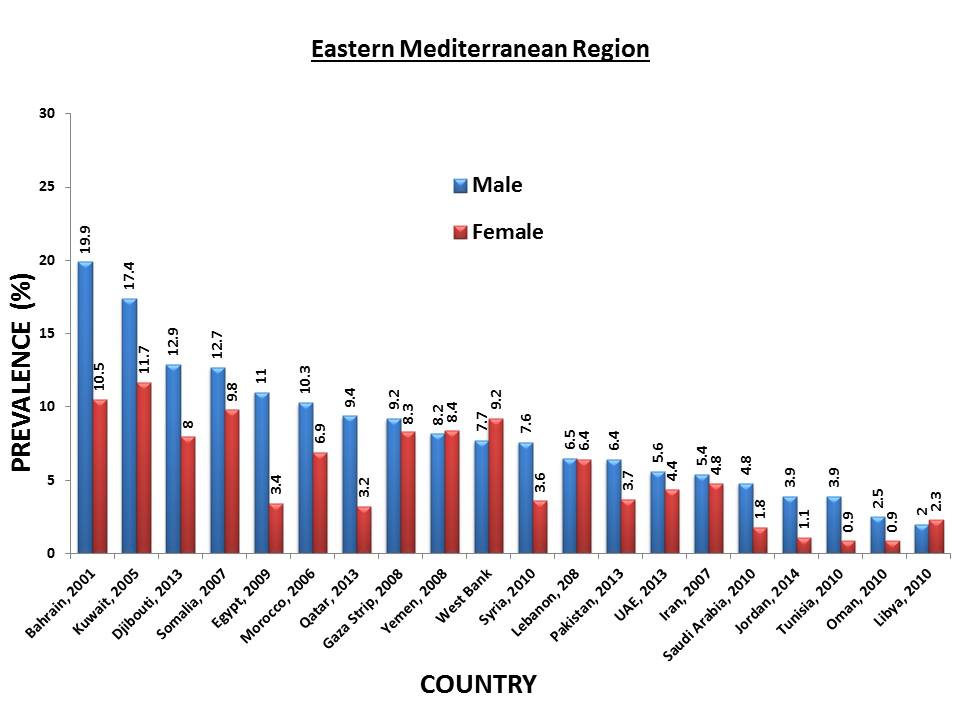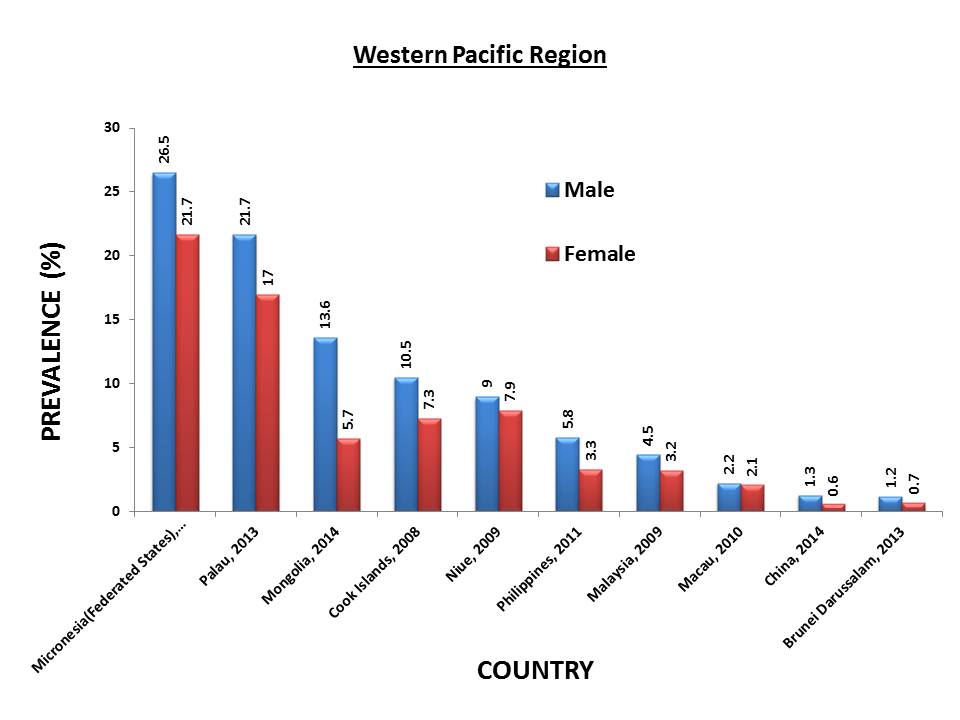
Global Youth Tobacco Survey (GYTS) is a school based survey designed to enhance the capacity of countries to monitor tobacco use among school going adolescent in 13-15 age group and to guide the implementation and evaluation of tobacco prevention and control programmes. GYTS uses a standard methodology for constructing the sampling frame, selecting schools and classes, preparing questionnaires, following consistent field procedures and using consistent data management procedures for data processing and analysis. The information generated from GYTS can be used to simulate the development of tobacco control programmes and can serve as a means to assess progress in meeting programme goals.
Prevalence of Smokeless Tobacco Use among Adolescents by Sex Aged 13-15 yrs.: Findings from Global Youth Tobacco Survey (GYTS)
It was observed that overall 6.6% male students (boys) and 3.6% female students (girls) used Smokeless Tobacco(SLT). Boys were significantly more likely to use SLT than girls in Low Income Country(LIC) and Lower Middle Income Country(LMIC) group(8.9% boy vs 4.9% girl) as well as High Income Country(HIC) and Upper Middle Income Country(UMIC) group(3.2% boy vs 1.6% girl) (p<0.001).
Prevalence of SLT use among boys as well girls was significantly higher in LIC and LMIC Group compared to HIC and UMIC Group(p<0.001).

WHO Region Wise Prevalence of Smokeless Tobacco Use Among Adolescent (Age Group: 13-15 yrs.)
a) African Region
In African Region, prevalence of Smokeless Tobacco(SLT) use among males was highest in Congo(18.3%) and lowest in Togo(2.4%) and among females, the prevalence of SLT use was highest in Sierra Leone(19.1%) and lowest in Algeria(0.8%). Prevalence was higher among males in most of the countries of African Region, however, it was either equal or higher among females in Yemen, West Bank, Lebanon and Libya.

b) American Region
In American Region, prevalence of SLT use among males was highest in Barbados(11.5%) and lowest in Costa Rica(0%) and among females, the prevalence of SLT use was highest in Jamaica(8.5%) and lowest in Canada(0.3%). Prevalence was higher among males in most of the countries of American Region, however, it was either equal or higher among females in Jamaica, Trinidad and Tobago, Panama, Peru and Costa Rica.

c) Eastern Mediterranean Region
In Eastern Mediterranean Region, prevalence of SLT use among males was highest in Bahrain(19.9%) and lowest in Libya(2%) and among females, the prevalence of SLT use was highest in Kuwait(11.7%) and lowest in Tunisia and Oman(0.9%). Prevalence was higher among males in most of the countries of Eastern Mediterranean Region, however, it was either equal or higher among females in Yemen, West Bank, Lebanon and Libya.

d) European Region
In European Region, prevalence of SLT use among males was highest in Norway(18%) and lowest in Netherlands(0.3%) and among females, the prevalence of SLT use was highest in Croatia(14.5%) and lowest in Netherlands(0.1%). SLT use was higher among males in most of the countries in European Region, however, the prevalence was either equal or higher among females in Republic of Moldova, Montenegro, Republic of Korea, Kazakhstan and Netherlands.

e) South-East Asia Region
In South-East Asia Region, SLT use among males was highest in Bhutan(25%) and lowest in Indonesia(3%) and among females, highest in Bhutan(18.9%) and lowest in Sri Lanka(0.5%). SLT use was higher among males in 10 countries of South-East Asia Region, however, in Timor-Leste, SLT use was higher among females.

f) Western Pacific Region
In Western Pacific Region, prevalence of SLT use among males was highest in Micronesia(26.5%) and lowest in Brunei Darussalam(1.2%) and among females, highest in Micronesia(21.7%) and lowest in China(0.6%). SLT use was higher among males in all countries except Macau where the prevalence was either equal or higher among females.

